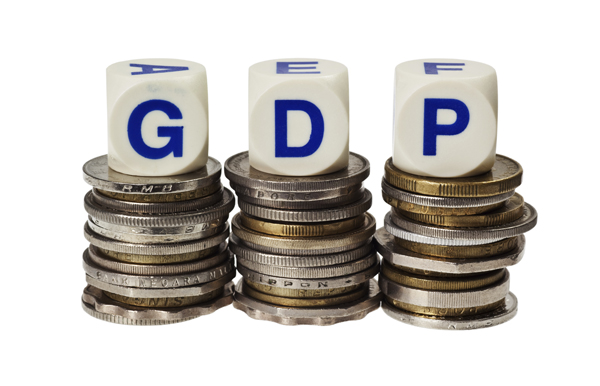Author: Yuwanee Ouinong and Pimnipa Booasang
![94487905.jpg]()
![Event.png]() |
![Event.gif]()
|
- The Office of the National Economic and Social Development Board (NESDB) reported that Thailand’s GDP in Q4/2017 expanded by 4.0%YOY (compared with the same quarter in the previous year) or 0.5% relative to the previous quarter before seasonal adjustment, pushing Thailand’s GDP for 2017 to 3.9%
|
![Analysis.png]() |
![Analysis.gif]() |
- Merchandise exports – tourism fueled Thailand’s growth momentum. Real export value in Thai baht of merchandise goods continued its high growth rate of 6.6%YOY in the 4th quarter thanks to expansion in all product categories and almost all export markets, pushing exports to grow at 5.6%YOY in 2017. Nevertheless, exports grew well both in terms of price and quantity. Global crude oil price still expanded at over 19%YOY in the 4th quarter, boosting exports of oil-related products to surge at 24%YOY. Moreover, a continued better-than-expected growth of global manufacturing sector led to rising demand of key industrial products. This was reflected in export values of electronics as well as automobiles, equipment, and parts that grew by over 18%YOY and 17%YOY respectively. Meanwhile, tourism sector remains Thailand’s growth driver. Service exports in the 4th quarter expanded by more than 9.7%YOY from a rise in number of tourists of over 20%YOY, particularly from China which grew by more than 67%YOY. This was partly because of the low base effect during the same period last year following the crackdown of illegal tour operators. However, export of services rose over 5.0%YOY in 2017.
- Private consumption was still driven mainly by high-income group. Private consumption grew by 3.5%YOY. A key driver remains consumption on durable goods which expanded over 21.8%YOY. In particular, spending on automobiles rose as high as 35.1%YOY, reflecting spending from middle- to high-income groups. Meanwhile, growth of non-durable goods such as food and beverage slowed down from the previous quarter, while consumption on clothing and footwear contracted.
- Investment in machinery and equipment boosted private investment, while public investment continued to contract. Private investment grew by 2.4%YOY on the back of investment in machinery and equipment which expanded by 3.4%YOY particularly in telecommunication equipment, arms and military equipment, computer, and commercial vehicles. On the contrary, construction investment fell, for both dwellings and non-dwellings. However, public investment is still declining at -6%YOY due to a delay in disbursement of the Ministry of Transport and since some government’s construction projects are almost completed.
|
![Implication.png]() |
![Implication.gif]()
|
- EIC expects the Thai economy to continue expanding at 4.0%YOY in 2018, but the concentration of growth as in Q4/2017 is likely to remain. Given the stronger outlook of the global economy and declining risks of economic slowdown in major economies, Thailand’s merchandise exports and tourism will likely remain key growth drivers this year. Such growth will directly benefit large businesses and result in a pickup in private investment. On the public side, spending is likely to recover from expediting investment in mega-projects. However, EIC believes that growth is not likely to widely spread over to households as sign of recovery of the key factor¬, which is the labor market, has not yet been observed despite accelerating growth for the whole year. In the 4th quarter of 2017, employment was declining at -0.5%YOY, which continued from -1.7%YOY from the previous quarter. Such decline was seen in agricultural, construction and manufacturing sectors, reflecting a fall in demand for labor across wider industries. This led to a weaker outlook for household purchasing power and consumption.
- Eye on risks of strong baht and impacts from higher wages. EIC views that the baht will continue to exert pressures on exports as the baht is likely to remain strong at approximately 31-31.5 baht per US dollar. This will likely impact income in Thai baht of Thai exporters, whereas the Nominal Effective Exchange Rate (NEER) was stronger by more than 5.4%YOY in January. This reflected a weaker price competitiveness relative to trading partners. On another note, EIC believes that the minimum-wage rise in April, when the labor market remain subdued, will likely lead to risks of a more persistent slowdown in employment. According to the business survey done by Prachachart in many provinces, businesses started to be concern on such issue, especially small manufacturers such as clothing, furniture, and processed food. In addition, according to the interview with the president of the Thai Retailers Association, retail businesses will likely be more affected due to limited choices in adopting technology and machinery in place of labor. Nevertheless, the minimum-wage rise can potentially impact the employment outlook of other non-minimum wage groups from the need to control cost of businesses, which can be done through adjustment in employment in various income groups simultaneously. EIC, therefore, views that the labor market issue is considered the hot issue to be monitored for the Thai economic outlook in 2018.
|
